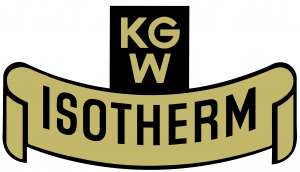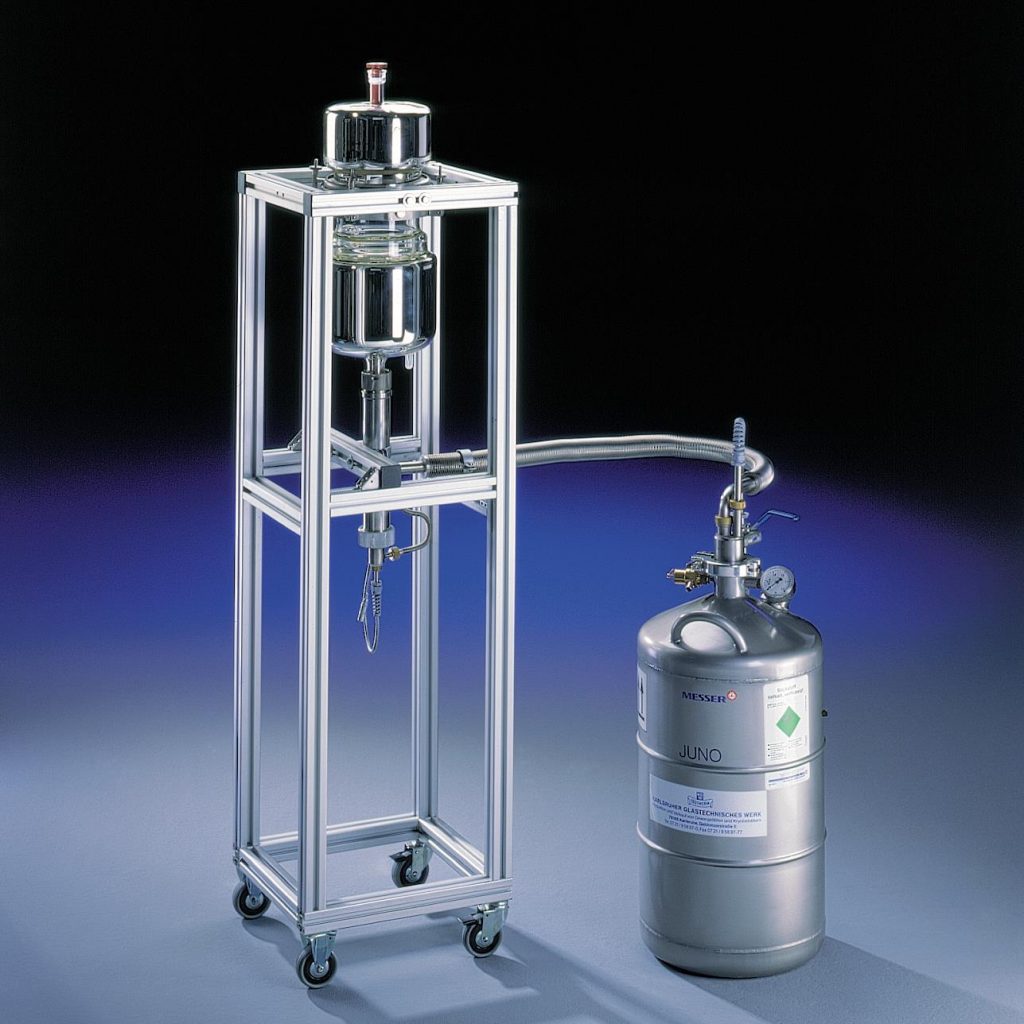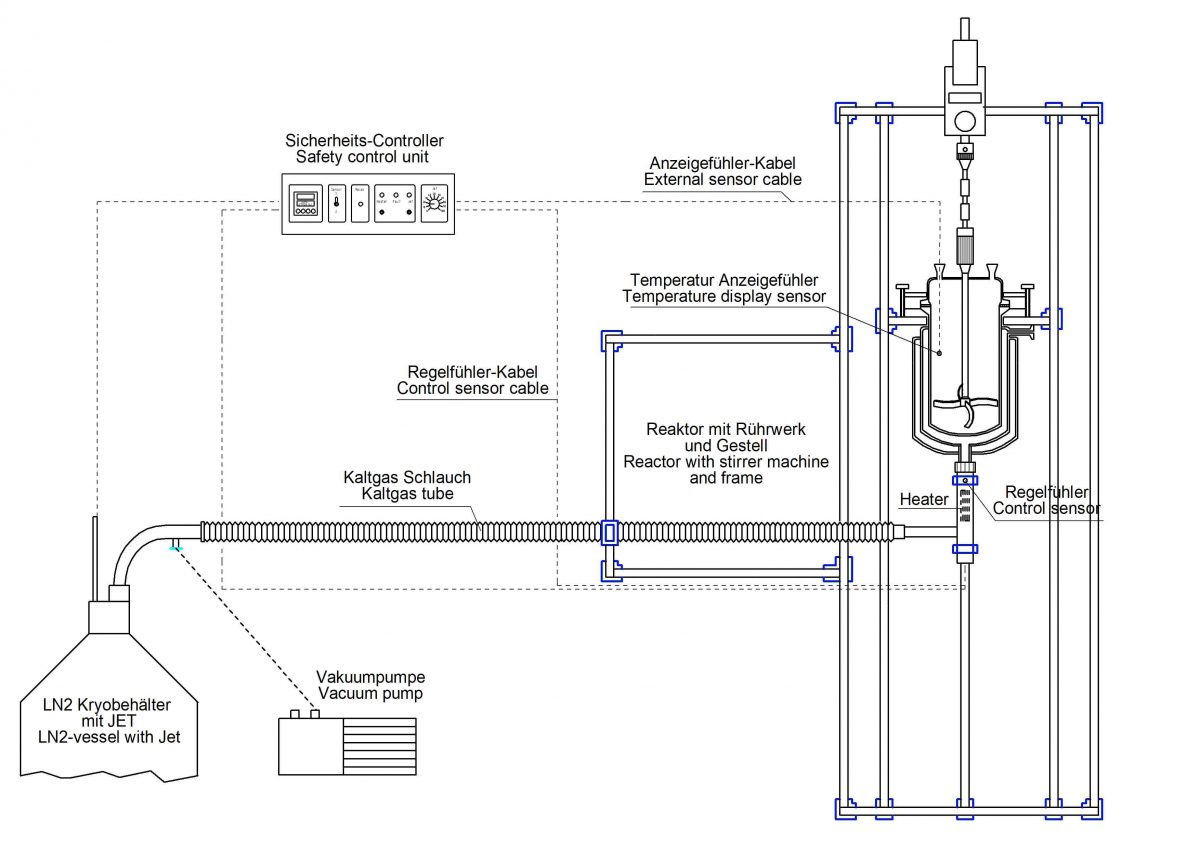Low-temperature cooling system type TG-RID for glass reaction vessels Temperature range from +100°C to -180°C measured at the internal temperature sensor
Indirect cryogenic cooling for reaction vessels from + 100°C to – 180°C
In order to meet the requirements for high cooling speeds and low temperatures, it is sometimes possible to switch from conventional thermostat cooling to a liquid gas cooling system developed for this task. KGW-ISOTHERM has designed a new KALTGAS application for this application. The reactor is cooled using cryogenic nitrogen gas, which enables a high cooling rate. The simple handling and high operational reliability make it easy to get started with this cooling technology.
Cold gas systems – TG-RID
KALTGAS is a temperature control system based on the low temperature of liquid nitrogen as a refrigerant. The liquid nitrogen is vaporized in a cryogenic tank by means of a heater (jet). This generates a constant, cryogenic gas flow. By varying the heater (jet) on the safety controller (SC5), both the cooling capacity and the gas flow volume can be changed, and the LN2 consumption can be reduced to a minimum by varying the jet power. The cryogenic gas flow is then fed through a vacuum-insulated, flexible metal pipe to a heat exchanger (heater). The heat exchanger has the task of heating the cold gas flow to the desired temperature. This means that a predefined gas flow with a predefined temperature is available as a coolant at the outlet of the heat exchanger. This constant gas flow is passed through the tempering jacket of the reaction vessel and cools the medium in the vessel. This KALTGAS system is referred to as indirect temperature control of reaction vessels. In this KALTGAS system, the high cooling rate of the medium in the reaction vessel is achieved by the large temperature differences between the cold gas and the medium to be tempered. A KALTGAS system generates a -180°C cold gas flow within a few minutes. This extremely cold gas flow enables rapid cooling of the medium in the reaction vessel. The standard safety controller (SC5) achieves a temperature stability of the gas flow of less than +/-0.2°C in the regulated state.
By using a cascade controller, not only the gas temperature but also the medium temperature in the reaction vessel can be controlled. As the actual temperature approaches the setpoint temperature, this temperature difference is continuously reduced by the temperature controller so that a temperature stability of approx. +/-0.1°C can be achieved in the controlled state. In addition to the high cooling speed and good control stability, another key advantage of KALTGAS systems is their modular design. By replacing individual components such as the gas line, the jet or the heater, the cooling capacity and the cooling speed can be changed. The basic modules, such as the LN2 tank, vacuum pump or temperature control, remain unchanged.
Another advantage lies in the refrigerant itself. The nitrogen gas is inert and the reaction vessel can therefore be changed without the usual problems associated with thermostatic oil. The cleaning of the reaction vessel is also limited to the reaction chamber of the vessel and no longer requires additional cleaning of the tempering jacket.
In a reaction vessel, 1.5 liters of methanol are cooled from +20°C to -95°C within approx. 50 minutes. The LN2 consumption during the cooling phase is 5 – 6 liters of LN2. To keep the methanol at -95°C, the reactor only requires approx. 1.2 liters of LN2 per hour.
Technical data for:
Type TG-RID
Jet = 500 watts
Heater = 630 watts
Reactor = 2 liter volume vacuum-insulated with a viewing strip
Lid = 3 x NS 29/32 lateral / central 1 x NS 29/32 ; vacuum-insulated
Frame made of aluminium
Piping made of V2A, length 1.5 meters, can be evacuated with vac. Pump
Siphon for LN2 container with KF NW 50
Order no. No:TG-RID 63/50
Download cold gas info sheet
Cold gas info sheet as PDF file Download cold gas info sheet
Accessories
LN2 containers with volumes from 20 liters to 300 liters
Agitator, stirrer and stirrer closure
Reactors with larger volumes
Further KALTGAS system services on request
Subject to technical changes


